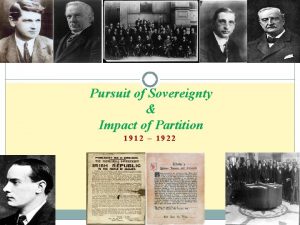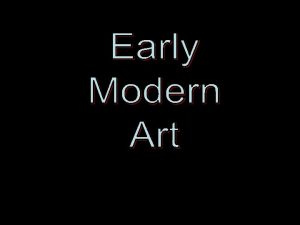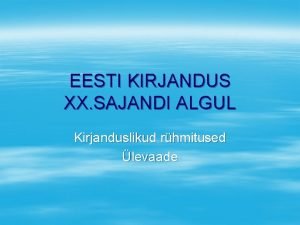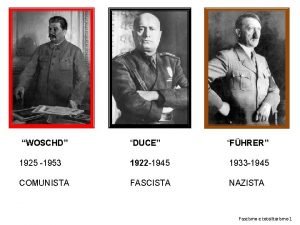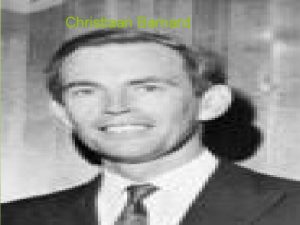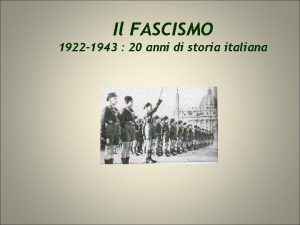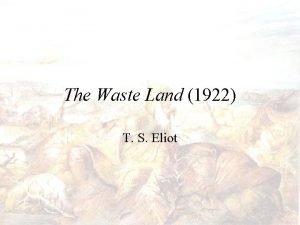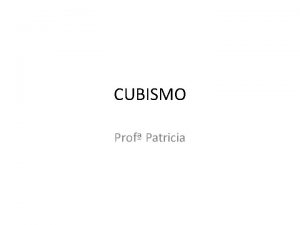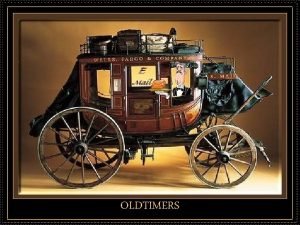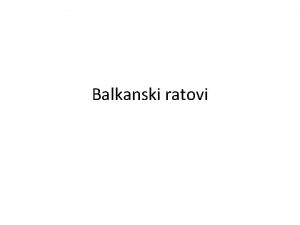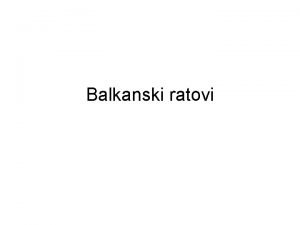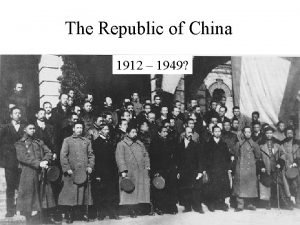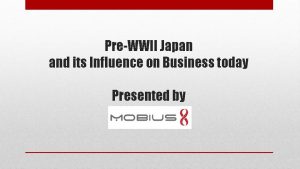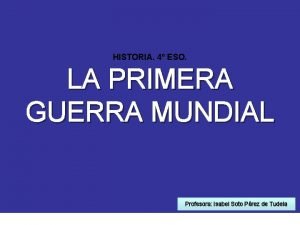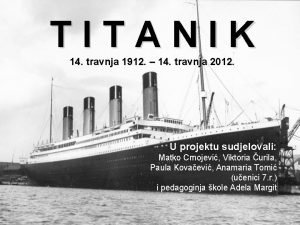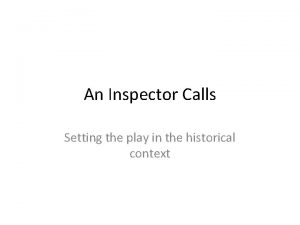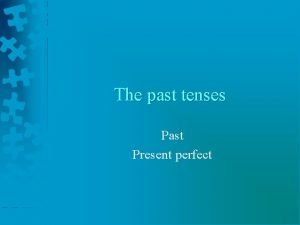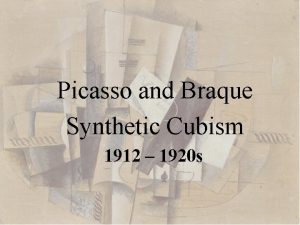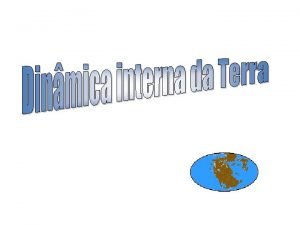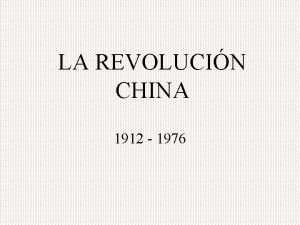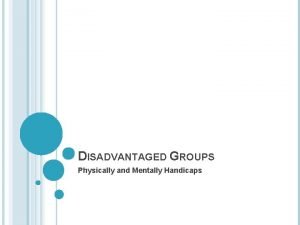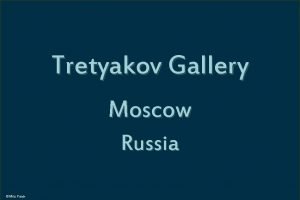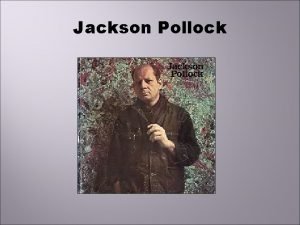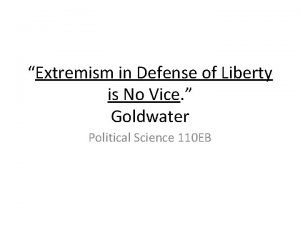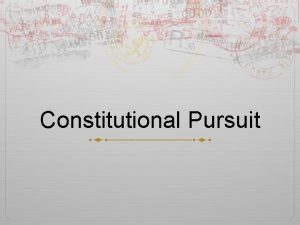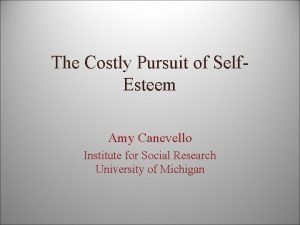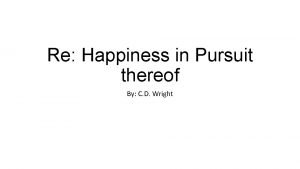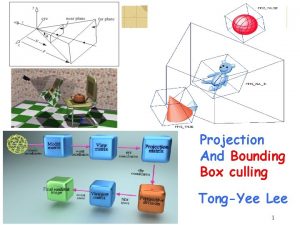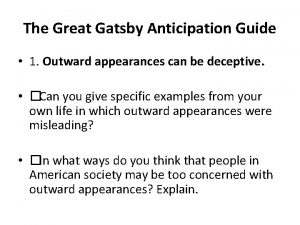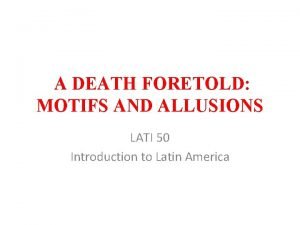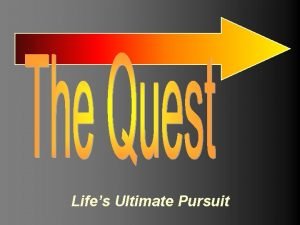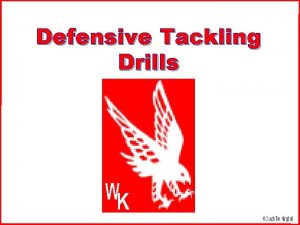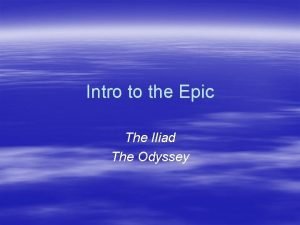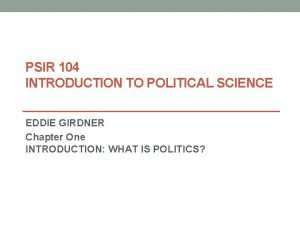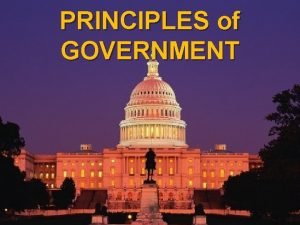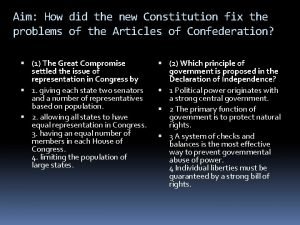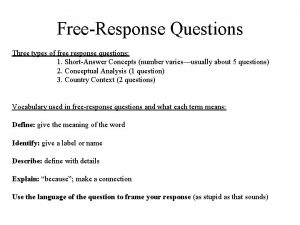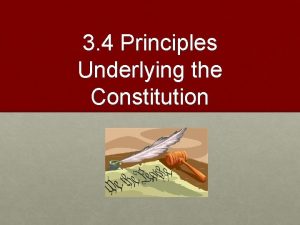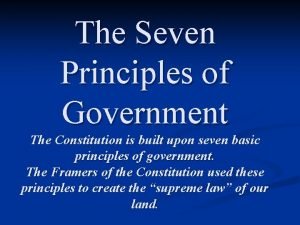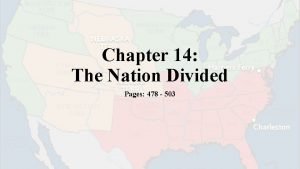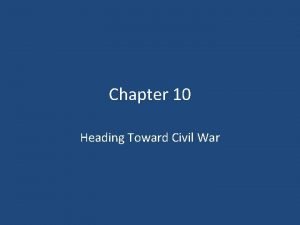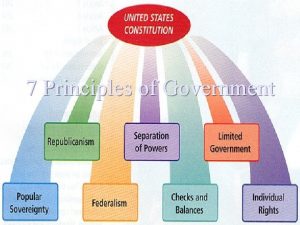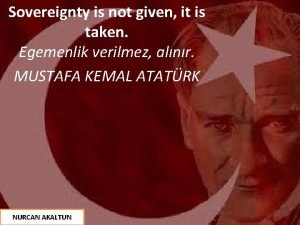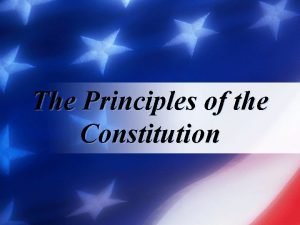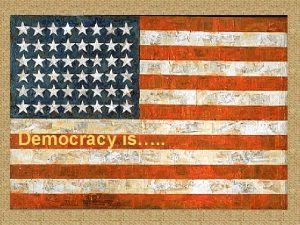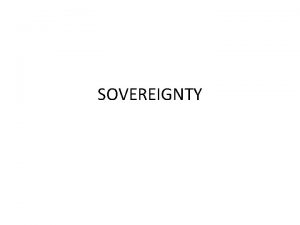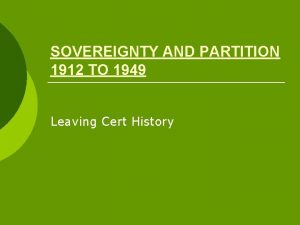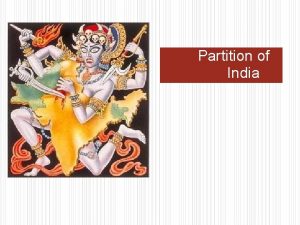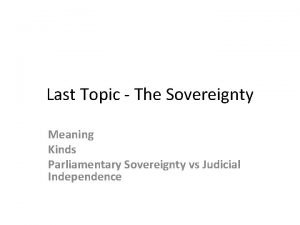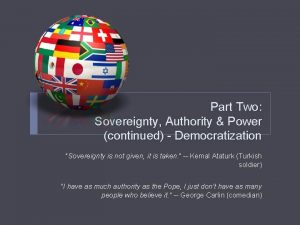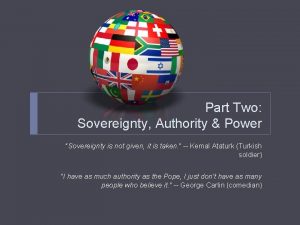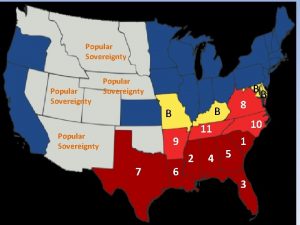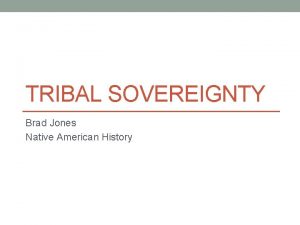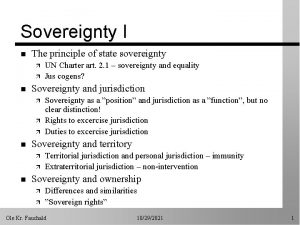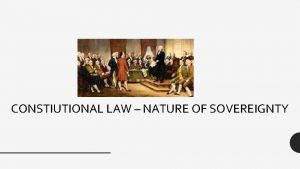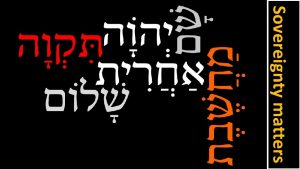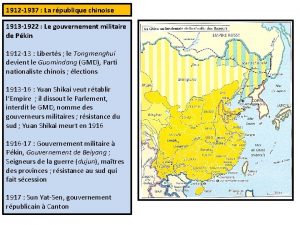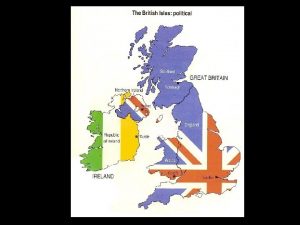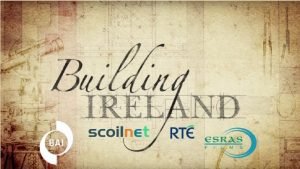Pursuit of Sovereignty Impact of Partition 1912 1922


























































- Slides: 58

Pursuit of Sovereignty & Impact of Partition 1912 – 1922

Background 1801 - 1912 Act of Union 1800 – came into effect in 1801: created the ‘United Kingdom of Great Britain & Ireland’ Home Government Association founded by Isaac Butt in 1870 Became the Home Rule Party in 1873 Parnell’s leadership of Home Rule Party (1880 – 1890) brought about the 1 st Home Rule Bill (1886) : defeated by House of Lords’ veto 2 nd Home Rule Bill (1893) defeated again by House of Lords *Parliament Act (1911) reduced the House of Lords’ veto to a delay of 2 years* 3 rd Home Rule Bill passed in 1914

Cultural Nationalism 1880’s - 1910 With the failure of Parnell’s Nationalist movement and the 1 st & 2 nd Home Rule Bills, Nationalists inevitably looked to more homogenous characteristics of Irish identity. This occurred as a natural process of re-awakening Irish identity in language, sport and literature provoked and encouraged by the political process of nationalism. Gaelic Athletic Association (1884) Gaelic League (1893) Anglo-Irish Literary Revival (1900’s)

The Parliament Act (1911) The Parliament Act of 1911 was a culmination of a struggle between the Liberal Government of Britain & the House of Lords in Westminster. The Liberal Government had attempted to bring in a controversial ‘Peoples’ Budget’ in 1909 which would have resulted in a greater distribution of wealth and a ‘supertax’ on wealthy landowners. The Conservatives opposed the Bill also. In an effort to remove the veto of the House of Lords, the Parliament Act was passed which reduced the House of Lords’ Veto to a delay of 2 years. *Considering how the House of Lords had vetoed both the 1886 & 1893 Home Rule Bills, this would prove to be a very significant legislative event for Ireland.

1912 – 1920: Growth of Extremism & Partition of Ireland -- 3 RD HOME RULE BILL -- SOLEMN LEAGUE & COVENANT -- UVF & IRISH VOLUNTEERS -- SPLIT IN IRISH VOLUNTEERS -- 1916 RISING -- 1918 GENERAL ELECTION: SINN FÉIN VICTORY -- 1 ST DÁIL EIREANN -- DECLARATION OF INDEPENDENCE -- IRISH WAR OF INDEPENDENCE -- TRUCE & TREATY NEGOTIATIONS -- SINN FÉIN SPLIT

3 rd Home Rule Bill (11 th of April 1912) Introduced on 11 th April 1912 by Prime Minister H. H. Asquith of the Liberal Government (supported by the Irish National Parliamentary Party) Provisions: 1) 2) 3) 4) Bicameral Parliament (upper & lower houses – a ‘Senate’ & ‘House of Commons’) to be created in Dublin, dealing with internal affairs such as education, agriculture, policing etc. A limited number of Irish MPs to continue sitting in Westminster Abolition of Dublin Castle Retention of Lord Lieutenant 1912 - passed in House of Commons; rejected by House of Lords 1913 – passed in House of Commons; again rejected by House of Lords 1914: - passed in House of Commons; again rejected by House of Lords. (Parliament Act utilised: House of Lords by-passed - sent for ‘Royal Assent’ which it received. ‘Government of Ireland Act (1914)’ *Government of Ireland Act (1914) ‘shelved’ due to outbreak of World War One

Religious Distribution in Ireland (1912) Unionists constituted a very small minority of the population in Munster, Leinster & Connaught, but held a slight majority in the province of Ulster. This slight majority would become a key area of concern for Unionists in Ulster and would result in a ‘specific local partitioning’ of Ulster itself: IN: 6 counties of Armagh, Antrim, Down, Derry, Fermanagh & Tyrone would be included as they contained a majority of Unionists OUT: Cavan, Donegal & Monaghan would be excluded as they contained a minority of Unionists

Unionist Party of Ireland (1910) Sir Edward Carson Sir James Craig - Unionist Party leader - Unionist Party deputy leader Political Allies: Ever since Gladstone’s Liberal Government support for Home Rule in the 1880’s, the Conservative Party of Britain, had diametrically given support to Irish Unionism. Conservative Party was also very pro-Empire

3 rd Home Rule Bill: Unionist Reaction Unionists outraged at proposition of Home Rule – declared their opposition to HR in ‘Ulster Solemn League & Covenant’ signed by over 200, 000 male Unionists in Belfast on September 28 th, 1912. A similar, but separate Covenant was signed by over 250, ooo Unionist women. Reasons for Unionist Opposition to Home Rule: - Religious - Political - Economic Edward Carson & supporters signing the Solemn League & Covenant in Belfast on September 28 th, 1912

Ulster Volunteer Force (1913) The Ulster Volunteer Force was formed in 1913 as a direct expression of the Solemn League & Covenant Limited to 100, 000 men who had already signed the Covenant, enlistment began on the 13 th January 1913. “. . . using all means that may become necessary to defeat the present conspiracy to set up a Home Rule parliament in Ireland. . . ” Solemn League & Covenant (1912) A retired General, Sir George Richardson, was appointed as their commander.

‘The North Began’ “There is nothing to prevent the other twenty-eight counties from calling into existence citizen forces to hold Ireland "for the Empire". It was precisely with this object that the Volunteers of 1782 were enrolled, and they became the instrument of establishing Irish self-government. ” Eoin Mac. Neill ‘An Claidheamh Soluis’ 1 st November 1913

Irish National Volunteer Force & IRB Bulmer Hobson Eoin. Mac. Neill (IRB) (Gaelic League)

Irish National Volunteer Force & IRB The IRB was always interested in any group espousing Irish cultural, linguistic, economic or political independence. IRB underwent a revival from 1900 on, with Denis Mc. Cullagh, Bulmer Hobson (Dungannon Clubs & ‘The Republic’ [newspaper]) & Seán Mc. Dermott all contributing hugely to a recruitment drive towards renewed physical force nationalism. Many older Fenians in the IRB were being replaced by younger, more energetic men, with Thomas Clarke a sole surviving ‘older’ Fenian maintaining the link with the past. The IRB infiltrated all Nationalist organisations e. g. GAA & Gaelic League and remained in the background, preparing for a rebellion, while the Irish Home Rule Party enjoyed electoral success up to 1914.

Irish National Volunteer Force • - Founded on 25 th November 1913 in the Rotunda, Dublin, to protect implementation of Home Rule • - Mac. Neill heavily influenced by Hobson • - Run by a Provisional Committee • - Up to 75, 000 members initially • - Cumann na m. Ban set up as an auxiliary force • - Heavily infiltrated by IRB from beginning • - Conflict of aims?

Cumann na m. Ban (2 nd April 1914)

John Redmond & Irish Volunteers

Volunteers: A Threat to Redmond’s Authority? John Redmond viewed the formation of the Irish National Volunteer Force as a potentially destabilising threat to the hegemony of the Irish Parliamentary Party in Nationalist Ireland. He demanded that 25 individuals, nominated by his party, should be on the Provisional Committee of the Volunteers. Mac. Neill accepted this compromise, essentially granting Redmond control over the Volunteers. IRB men in the Volunteers objected, but to no avail.

The Curragh Mutiny (20 th March 1914) • In response to a potential clash with Ulster Volunteers, fifty-eight British Army officers, stationed in the Curragh in Co. Kildare, resigned their commissions in protest. • British Prime Minister Asquith moved to quell unrest in the Army by assuring them they would not be forced to interfere with the Ulster Volunteer Force.

Gun-Running Larne, Co. Antrim Howth, Co. Dublin (UVF) (Irish National Volunteers) 24 -25 th April, 1914: 26 th July, 1914: 25, 000 guns & 3 million rounds of ammunition Irish Volunteers unload the ‘Asgard’

• - Carson & Craig (Ulster Unionists) • - Lord Landsdowne & Bonar Law (Conservative Party) • - Redmond & Dillon (Irish Parliamentary Party) • - Asquith (PM) & Lloyd George (British Government) The Buckingham Palace Conference was organised to attempt to bring about a compromise solution in Ireland between Unionist & Nationalist demands. It ended on 24 th July, 1914, without any solution.

Home Rule ‘shelved’ Home Rule Bill becomes law on 18 th September 1914. Carson ‘allowed’ it to pass on condition that it would not be implemented until the ‘Ulster Question’ had been resolved. Ulster Volunteers formed the 36 th Division from their own members, with Unionist officers and using UVF emblems. National Volunteers joined the 10 th & 16 th Divisions, but did not have a ‘National Volunteer Division’. A sign of the pro-Unionist mentality of the British War Office. Altogether, over 200, 000 men from Ireland fought in the war, with 30, 000 dying. Redmond persuaded the British Government not to introduce conscription to Ireland. When Britain formed a national coalition government in 1915, Carson joined as Attorney-General but Redmond refused. Redmond’s influence begins to wane from 1915 onwards.

Redmond & World War I Initially, the Irish Volunteers were formed to support Home Rule and the mainstream Nationalist agenda. They were formed as a reaction to the establishment of the Ulster Volunteer Force (UVF) As the situation in mainland Europe “. . . to the best of her ability to go where ever the firing line extends, in defence of right, of freedom and of religion in this war. It would be a disgrace forever to our country otherwise. . . “ Woodenbridge Speech 20 th September 1914 detiorated, Redmond proposed that the Volunteers prove their nationalist credentials to Britain & the world by fighting alongside the Allies in World War One. The fate of small Catholic countries like Belgium was used as a cause for creating support for the war effort This caused a split in the Irish Volunteers, with the vast majority supporting Redmond’s proposition

1914 – 1916: Irish Volunteer Split National Volunteers Numbering about 180, ooo, they actively or passively agreed with Redmond’s proposition. 32, 000 of the National Volunteers fought in the 10 th & 16 th Divisions of the British Army during WWI. Irish Volunteers Totally opposed to Redmond’s proposal to fight alongside the British, this small number of Volunteers left to form the ‘Irish Volunteers’. They would play a significant part *After Redmond’s Woodenbridge speech, many Sinn Féiners joined the Irish Volunteers, hence. . in the Easter Rising alongside groups such as the Irish Citizen Army, the IRB & Fianna Eireann *Sinn Féin Volunteers*

1916 Rising “IF WE ACCOMPLISH NO MORE THAN WE HAVE ACCOMPLISHED, I AM SATISFIED THAT WE HAVE SAVED IRELAND’S HONOUR. ” PATRICK PEARSE ` – THE TRIUMPH OF FAILURE R. W. EDWARDS.

Planning for Rebellion: 1915 - 1916 I R B Irish Volunteers (Eoin Mac. Neill) Irish Citizen Army (James Connolly) Cumann na m. Ban (Countess Markiewicz) Supreme Council (1915) Eamon Ceannt Thomas Mac. Donagh Padraig Pearse Joseph Plunkett Thomas Clarke Seán Mc. Dermott Proclamation of Irish Republic ‘Castle Document’ (forgery) – issues countermanding orders to ‘stand down’ on Sunday, April 23 rd 1916 Roger Casement & ‘Aud’ captured off coast of Kerry, Easter Weekend, 1916

Padraig Pearse Became DMO of the Irish Volunteers in 1914 (Director of Military Organisation) Had supported Home Rule up until 1912, but became convinced of need for military action due to the intransigence of the Unionists. Member of the IRB. Joined the Military Council of the IRB in 1914. “Life springs from death, and from the graves of patriot men and women spring living nations. ” - P. Pearse (O’Donovan Rossa graveside oration)

Planning for Rebellion • Getting arms from Germany (Casement sent to gather guns and an Irish Brigade from German POW camps). • IRB men would lead volunteers in rebellion. • When guns were to be landed in Kerry on the weekend of Friday 21 st – Sunday 23 rd April, that was the signal for the beginning of the Rising. • Weapons to be distributed throughout the south-west of the country. • Absolute secrecy of IRB Council meant that very few knew of the plans beforehand. IRB Military Council

Planning for Rebellion II • James Connolly & the Irish Citizen Army joined the rebels in their plans in January 1916. • Connolly was determined to attack British rule in Ireland, as a precursor to establishing a Socialist Republic. • Connolly only had about 200 men. IRB Military Council

The Aud & Roger Casement: Friday 21 st April • The ‘Aud’ set sail for Tralee Bay on 9 th April with 20, 000 rifles and 10 machine guns. • Confusion and changed orders meant that there was no one to meet them in Tralee Bay until Sunday, 23 rd April. • The Aud had no radio and having arrived on Friday morning, was eventually caught and forced to return to Cork Harbour. • As it entered Cork Harbour, the captain ordered the men off his ship and sank it. • Separately, Roger Casement was also captured in Tralee Bay after coming ashore from a German submarine.

Confusion & Countermanding orders: The ‘Castle Document’ Wednesday 19 th Wednesday, 19 th April: Having originally being fooled by a forged document, claiming that all leaders of the Volunteers and other Irish organisations were to arrested, Mac. Neill agreed for the Rising to go ahead and ordered the Volunteers to rise on Easter Sunday. Thursday, 20 th April: Having realised he had been tricked, he cancelled his order of Wednesday. Friday, 21 st April: Mac. Donagh & Mac. Diarmada went to see him and told him of the arms shipment from Germany. Realising that conflict was inevitable once the weapons arrived. Mac. Neill reinstated his order of Wednesday. Saturday, 22 nd April: News of Casement’s arrest and the Aud reached Dublin by Saturday. Mac. Neill cancelled his orders once again, even publishing the cancellation in a Sunday newspaper. Sunday, 23 rd April: James Connolly and the Irish Citizen Army meet in Liberty Hall, where they decide to hold a rebellion regardless. – Sunday 23 rd April 1916

Formation of 1916 Rebel Forces Irish Republican Brotherhood Cumann na m. Ban Irish Citizen Army 1916 Rebels IRISH VOLUNTEERS Sinn Féin?

Rebels’ Positions Easter week 1916

Strategic Approach Capture key buildings: ‘Static Warfare’ GPO – HQ of Rising Pearse – C/O of Rebels, reads Proclamation on Monday, 24 th April 1916 Disrupt British communications Provoke national uprising Strengths: Immediate strike at the centre of British Rule in Ireland, capturing key buildings would immediately propel the British forces into an armed conflict on the streets of Dublin. Daring and provocative, it would place the conflict in full view of the population. Weaknesses: Isolated ‘static warfare’ approach would achieve limited success at best, UNLESS there was a widespread support of the population. Difficulty with support & re-supply, British forces found it relatively easy to isolate and ‘choke’ these pockets of resistance. *Mac. Neill’s countermanding orders*

1916: A Doomed Attempt or Strategic Failure? Mac. Neill’s Pearse’s Countermanding Orders ‘Blood Sacrifice’ Mac. Neill’s decision to issue countermanding orders before the rebellion sealed its failure. Without widespread, national support the Rebels had no hope of successfully destabilising British control of Ireland Padraig Pearse became radicalised between the years 1912 & 1916. Realising fully the futility of even a large uprising without popular support, he instead preached the value of ‘Blood Sacrifice’ that would renew Irish Nationalism. Heavily influenced by Robert Emmet’s speech in 1803.

Aftermath of Rising: The ‘Triumph of Failure’ “WE HAVE DONE RIGHT. PEOPLE WILL SAY HARD THINGS OF US NOW, BUT LATER ON THEY WILL PRAISE US. ” PATRICK PEARSE THE TRIUMPH OF FAILURE R. W. EDWARDS

1916 – 1918: Rise of Sinn Féin Growing anger at British heavy-handedness in aftermath of Rising *British failure to implement Home Rule in Ireland Sinn Féin as ‘scapegoat’ Martial Law In an effort to ‘explain’ the “treacherous” behaviour of the 1916 Rebels, the British Government made a fundamental error in attempting to scapegoat Sinn Féin entirely for the Rising. Although clearly involved in the Rising, blaming the entire rebellion on one political party served only to focus the reaction, mostly hostile, of Irish moderate nationalists and extremists.

1910 - 1918 UK & Ireland General Election Shift

Demise of the Irish Parliamentary Party ELECTION RESULT (IRELAND ONLY) 1918: SINN FÉIN - 73 IRISH UNIONIST - 22 IRISH PARLIAMENTARY PARTY - 6 LABOUR UNIONIST - 3 INDEPENDENT UNIONIST - 1

An Chéad Dáil Eirinn 1919

Declaration of Independence: January 1919 On 21 st January 1919, the first Dáil Eireann met in Mansion House in Dublin. Sinn Féin TDs (Teachta Dála) met in line with their policy of Abstentionism from Westminster Parliament. Only 27 TDs met at this first gathering, due to many being in jail. Dáil issued the Declaration of Independence to the “free nations of the world” seeking recognition for the Republic.

Irish War of Independence 1919 - 1921 Significant Events Soloheadbeg Ambush Murder of Thomás Mc. Curtain Hunger Strike & Death of Terence Mac. Swiney Kilmichael Ambush - Burning of Cork Cairo Gang Assassinations Bloody Sunday Truce offered by British Government Guerilla Warfare

Soloheadbeg - on the same day as the Declaration of Independence from the Dáil, IRA forces in Soloheadbeg, Tipperary attacked an RIC detachment in an ambush. Kilmichael Ambush & Burning of Cork - in retaliation for numerous attacks and ambushes on Crown forces in County Cork and city, on the day of the Kilmichael Ambush in County Cork, Black & Tans set fire to the city centre of Cork. Thomás Mc. Curtain – murdered by men with blackened faces, an independent inquiry returned a judgement of murder against Lloyd George, the British Prime Minister. Terence Mac. Swiney – Having taken the place of Mc. Curtain, Mac. Swiney was arrested and went on hunger strike, dying after 73 days. Cairo Gang Assassinations & Bloody Sunday - Collins sent out the ‘Squad’ on Sunday morning of the 20 th November to assassinate the ‘Cairo Gang’ – members of British intelligence sent over to Ireland to deal with the growing IRA activity in Ireland. In response to these assassinations, British forces entered Croke Park and shot into the crowd killing 14 people, including a GAA player called Michael Hogan.

De. Valera’s Talks with L. George (1920) In 1920, De. Valera held a series of discussions with Lloyd George about a possible settlement even while the War of Independence was raging throughout the country. The most persistent idea that de. Velera espoused was that of ‘External Association’, whereby an independent Ireland would be choose to be ‘externally associated’ with Britain: thereby accomodating Unionists in the north of Ireland

Government of Ireland Act (1920) - In response to the escalating situation throughout most of the country, northern Unionists moved to cement their position within the United Kingdom. - The result of these talks between Craig & Lloyd George was the Government of Ireland Act (1920), whereby the north of Ireland would remain part of the UK as long they wished. - When the Anglo-Irish Treaty was signed, one of the key agreements was that the north of Ireland could ‘opt out’ of the new Irish Free State if they wished. They did so, two days after the foundation of the Irish Free State on December 8 th, 1921.

` Government of Ireland Act (1920) Lloyd George hoped to bring about a ‘Home Rule all Round’ solution to Ireland, thereby placating both Republicans & Unionists as well as international opinion. Unionists demanded simple majority, but PR was inserted into the Bill as the voting method. Unionists argued in favour of a 6 - county Northern Ireland, rather than a 9 -county Northern Ireland, thereby ensuring their majority in the new state. Provisions of the Act: - A ‘Northern State’ of six counties & a ‘Southern State’ of 26 counties - Bicameral Parliaments, North & South (Commons & Senate) Each State would elect a government & a Prime Minister - Both states would share a common Viceroy to the King of England - Westminster would retain ‘Imperial Powers’ over both states - A ‘Council of Ireland’ would be set up to create a platform for discussion, interaction & agreement between both states.

Reactions to Govt. of Ireland Act (1920) Dáil Eireann Partition unacceptable to Sinn Féin Viceroy & retention of ‘Imperial Powers’ unacceptable to Sinn Féin insisted on complete separation, although talks were already on-going between De. Valera & Lloyd George. Unionists Satisfied with the ‘ring-fencing’ of Northern Ireland at the least. Six-county state was key to maintaining Unionist domination of Northern Ireland & protecting them from future assimilation into a ‘United Ireland’. Unhappy about PR, but over- ruled by Lloyd George.

Anglo – Irish Treaty Negotiations 1921 Sinn Féin Delegation Arthur Griffith, Michael Collins, Robert Barton, George Gavin Duffy, Eamon Duggan , Erskine Childers. British Delegation Lloyd George, Winston Churchill, Lord Birkenhead , Austen Chamberlain

Issues of Contention Offer of negotiation from British Government to Dáil Eireann in July 1921. Truce declared on July 11 th 1921. Plenipotentiaries: Who should negotiate & what powers should they be granted? “. . negotiate and conclude … a treaty or treaties of settlement, association and accommodation between Ireland the community of nations known as the British Commonwealth. . ” ‘Dominion Status’ v. ‘External Association’ : What was the ultimate aim of the Sinn Féin delegation? Partition, Unionism & Government of Ireland Act (1920): How would the Sinn Féin delegation overcome the already-established Northern Ireland State?

Prelude to Negotiations Instructions to Irish Delegation ‘Draft Treaty A’ = External Association De. Valera’s qualification of ‘Envoys Plenipotentiaries’: ‘a main question’ or ‘the complete text of the draft treaty about to be signed’ (Refer back to Dublin) De. Valera’s insistence at remaining at home during negotiations. (To distance the office of President of Dáil Eireann from unacceptable proposals & create time-lapse to control direction of negotiations) British Proposals & Representatives Northern Ireland already established: therefore off the table* Integrity of British Commonwealth to be maintained Lloyd George, Churchill, Chamberlain & Lord Birkenhead to form front-line negotiation team.

Negotiations: 11 th October – 6 th December 1921 11 th – 17 th October: British delegation outline strong proposals and reinforce their aim to maintain the integrity of British Commonwealth. Sinn Féin delegation refute British claim over Ireland & offer considered clarifications & responses. Little progress made.

Dáil Debates Anglo-Irish Treaty M. Collins (Pro-Treaty) E. de. Valera (Anti-Treaty) Freedom to achieve Oath of Allegiance freedom Control of Internal Affairs Removal of British forces from Ireland Partition Dominion Status

Dáil vote on Anglo-Irish Treaty 7 th January 1922 Republican Ideal Irish Free State: “freedom to achieve freedom” Oath of Allegiance unacceptable Partition unacceptable Boundary Commission to examine Partition Border

From Division to Conflict: Pro-Treaty v. Anti. Treaty 1922 - 1923

Sinn Féin: 1905 - 1922 Founded in 1905 (Arthur Griffith) Name suggested by Máire Butler, cousin of Edward Carson!!! Impatience for Home Rule created greater support, 1905 – 1910.

Timeline 1912 - 1921 1911 – Parliament Act 1912 – 3 rd Home Rule Bill introduced to House of Commons – Solemn League & Covenant 1913 – Irish Citizen Army formed – Ulster Volunteer Force formed – Irish National Volunteer Force formed 1914 – Government of Ireland Act (1914) passed in Westminster – Outbreak of World War One 1916 – Proclamation of Irish Republic & Easter Rising 1917 – Sinn Féin re-organisation 1918 – Sinn Féin win 73 seats in UK & Ireland Election (1918) 1919 – Dáil Eireann established: issues Declaration of Independence to the “free nations of the world” – Outbreak of Irish War of Independence 1920 – Burning of Cork, Bloody Sunday, death of Terence Mac. Swiney 1921 – British offer of truce leads to Treaty negotiations – Anglo-Irish Treaty signed in London; ratified by Dáil Eireann; Irish Free State comes into effect on 6 th January 1922

Past Exam Questions (Higher) 1912 - 1921 - During the period 1912 -1920, what factors contributed to the partition of Ireland? 2010 - Why were the Anglo-Irish Treaty negotiations controversial? 2009 - To what extent was the Anglo-Irish Treaty, 1921, responsible for the Irish Civil War? 2008 - What were the aims and achievements of Patrick Pearse? 2007 - From 1912 onwards, what factors contributed to the partition of Ireland, 1920? 2006

Past Exam Questions (Ordinary) 1912 - 1921 Part B: Paragraph Part C: Essay - - - 2010 2009 - - 2008 - 2007 - 2006

 Pursuit of sovereignty and impact of partition essays
Pursuit of sovereignty and impact of partition essays Paul klee senecio 1922
Paul klee senecio 1922 Eesti kirjandusrühmitused
Eesti kirjandusrühmitused 1953-1922
1953-1922 Born in 1922 facts
Born in 1922 facts El fascismo italiano
El fascismo italiano The waste land 1922
The waste land 1922 Obras da semana de arte moderna de 1922
Obras da semana de arte moderna de 1922 1922 duesenberg
1922 duesenberg Frederick banting facts
Frederick banting facts Podela makedonije 1912
Podela makedonije 1912 Bitka na bregalnici crnogorci
Bitka na bregalnici crnogorci 1949-1912
1949-1912 1912
1912 Fases primera guerra mundial
Fases primera guerra mundial 14.4.1912
14.4.1912 1912 strikes an inspector calls
1912 strikes an inspector calls Hurry present perfect tense
Hurry present perfect tense Picasso guitar
Picasso guitar Harriet tubman 1912
Harriet tubman 1912 Picasso 1912
Picasso 1912 1912 alfred wegener
1912 alfred wegener Revolucion china 1912
Revolucion china 1912 Lunacy act 1912
Lunacy act 1912 Alyonushka
Alyonushka 1956-1912
1956-1912 Extremism in pursuit of liberty is no vice
Extremism in pursuit of liberty is no vice Constitutional pursuit answer sheet
Constitutional pursuit answer sheet Maestra giulia italiano
Maestra giulia italiano Pursuit pp
Pursuit pp The costly pursuit of self-esteem
The costly pursuit of self-esteem Educational pursuit meaning
Educational pursuit meaning Pursuit of happiness poem
Pursuit of happiness poem Projection pursuit
Projection pursuit Looking for richard stream
Looking for richard stream Wealth can breed carelessness
Wealth can breed carelessness Biblical allusions in chronicle of a death foretold
Biblical allusions in chronicle of a death foretold Ultimate pursuit objectives
Ultimate pursuit objectives Pursuit drill football
Pursuit drill football Arete time kleos
Arete time kleos Relentless pursuit of better
Relentless pursuit of better External sovereignty
External sovereignty What is the message
What is the message Limited government examples
Limited government examples Sovereignty ap human geography
Sovereignty ap human geography Popular sovereignty
Popular sovereignty Define sovereignty
Define sovereignty Popular sovereignty
Popular sovereignty External sovereignty
External sovereignty Checks and balances definiton
Checks and balances definiton Popular sovereignty
Popular sovereignty Popular sovereignty
Popular sovereignty Popular sovereignty
Popular sovereignty Limitations of parliamentary sovereignty uk
Limitations of parliamentary sovereignty uk What are the 7 principles of government
What are the 7 principles of government Sovereignty is not given it is taken
Sovereignty is not given it is taken Popular sovereignty
Popular sovereignty Elite democracy cartoon
Elite democracy cartoon Popular sovereignty
Popular sovereignty
